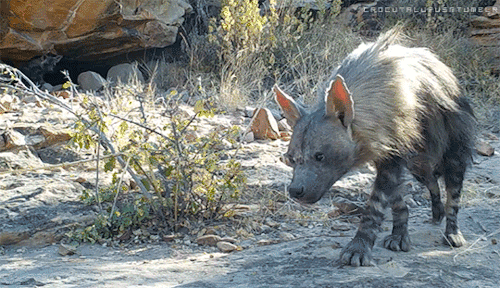Map Of US National Parks

Map of US National Parks
More Posts from Iphleandro-blog and Others


x

Start the day off right… with a little code!
How Brain Develops Before Birth is Tightly Controlled by RNA Modification
A chemical tag added to RNA during embryonic development regulates how the early brain grows, according to research from the Perelman School of Medicine at the University of Pennsylvania. The findings were published in Cell.

(Image caption: A human forebrain organoid labeled with Green Fluorescent Protein (green), neural stem cell marker SOX2 (red) and cell nuclei marker (blue). Credit: Xuyu Qian and Guo-li Ming, Perelman School of Medicine, University of Pennsylvania)
Neuroscience professors Guo-li Ming, MD, PhD, and Hongjun Song, PhD, study the basic principles of how to make a working brain. “When this development goes awry, problems happen and may cause psychiatric disorders in people,” Song said. Ming and Song use animal models and organoids, also called mini-brains, made from human stem cells to relate their findings to conditions found in people.
In the last few years, scientists have discovered chemical modifications to messenger RNA (mRNA) across the genome at certain sites and found that these changes are dynamic, meaning that a specific chemical group is added and taken off by enzymes in a regular, patterned way. The chemical group studied in the Cell paper, m6A, is the most prevalent modification to mRNA in human cells.
“We asked: Is this another layer of regulation of gene expression?,” Ming said.
The current thinking is that a tightly controlled molecular process guides the complicated development of the brain before birth—and that the process relies on a precise sequence of genes being turned on and off. However, even subtle mistakes in this process can become amplified later. Song likens this process to a train moving onto the wrong track and ending up miles and miles from its intended destination.
The classic view of this control is that DNA codes for RNA, guiding which proteins will be made by cells. However, mRNA can be modified along the way so that it can produce proteins with many variations. A new field called epitranscriptomics was born out of this knowledge.
The Cell paper is the first study of epitranscriptomics in the embryonic mammalian brain, and the key is m6A, a marker for molecules bound for disposal within the cell. Normally, m6A-tagged mRNAs are related to such processes as cell replication and neuron differentiation, and m6A-tagging promotes their decay after they are no longer needed.
If m6A is not added on the correct time schedule to a garbage-bound molecule, the developmental train goes down the wrong tracks. Ming and Song surmise that this is because developing brain cells get stuck at an earlier stage because the m6A cues for taking out the cellular trash are misread or not read at all.
The researchers found that in a mouse model with depleted m6A, cell replication is prolonged, so that stem-cell differentiation, which normally reels out daughter cells in an orderly fashion, gets stuck. The knockout mouse develops less brain cells such as neurons and glia cells, and therefore has abnormal circuitry and a non-functioning brain.
“We used an organoid, a mini-brain, made from human induced pluripotent stem cells to relate the mouse knockout findings to humans,” Ming said. “m6A signaling also regulates neuron development in human forebrain organoids.”
Neuron development in the mini-brains that Ming has developed is similar to what happens in people, modeling fetal brain development up to the second trimester.
“We were surprised when we found that human stem cells had a greater number of m6A tags compared to mouse cells,” Ming said. “Comparing the m6A-mRNA landscapes between mouse and human embryonic brain development showed us that human-specific m6A-tagging might be related to brain-disorder risk genes.”
Many of the genes associated with genetic risk for certain conditions, such as schizophrenia and autism spectrum disorder, are only m6A-tagged in humans, not in mice, raising the possibility that dysregulation at this level of gene expression may contribute to certain human brain disorders.
In the near future, the team plans to look for m6A levels in brain tissue donated by people who had psychiatric disorders, as well as if m6A regulates development and regeneration of the nervous system after birth.
smithsoniannmnh When calcium leached out from this scallop some 40 million years ago, it formed a halo that solidified the sediment around it. Unearthed in Washington state, the specimen now resides in our research collections. Happy #FossilFridayfrom our Department of Paleobiology and @SIxDIGI, who are well on their way to digitizing #1MillionFossils!

Top Shot: A Lion’s Gaze
Top Shot features the photo with the most votes from the previous day’s Daily Dozen, 12 photos selected by the Your Shot editors. The photo our community has voted as their favorite is showcased on the @natgeoyourshot Instagram account. Click here to vote for tomorrow’s Top Shot.
Your Shot photographer Pratha Narang photographed this lion after a buffalo hunt. Your Shot Producer, David Y. Lee writes, “Fantastic portrait of this magnificent animal. I agree with Your Shot photographer Jiawei L. who commented, ‘This is such an intense photo! I love the frame gives me an opportunity to look through the blur branches and finally reach the eye of the lion. It is such an intense spot!’” Photograph by Pratha Narang

The Bortle Scale and Light Pollution
The Bortle Scale is used by astronomers to rate the darkness of our skies. It ranges from 1 (darkest) to 9 (brightest). For most of us, our daily lives are spent beneath a radiance level of between 5 and 8 and rarely venture into areas ranked 3 or darker- and what a shame that is.
Light pollution, while a testament to our technological advances, has blanketed our view of the universe and decoupled our relationship with the cosmos. For the millions of people living in areas where less than 20 stars can be seen in the night sky, it is practically impossible to imagine a natural sky blanketed with upwards of 2,500 stars backed by great ribbons of billions of stars which can be found in our Galaxy: The Milky Way.
What are the effects of light pollution?
Continuar lendo
“There is no design without discipline. There is no discipline without intelligence.”
— — MASSIMO VIGNELLI
Breakfast far above the clouds, Pokut, Turkey



When Trilobites Ruled the World
infographics by The New York Times
brought to you by Graphic Services for Science and Graphic Biology
-
 brashwhispers reblogged this · 3 years ago
brashwhispers reblogged this · 3 years ago -
 roomforblue reblogged this · 5 years ago
roomforblue reblogged this · 5 years ago -
 spinmeround liked this · 6 years ago
spinmeround liked this · 6 years ago -
 jackwiant liked this · 6 years ago
jackwiant liked this · 6 years ago -
 onechair-barbershop reblogged this · 6 years ago
onechair-barbershop reblogged this · 6 years ago -
 jjohncrichton reblogged this · 6 years ago
jjohncrichton reblogged this · 6 years ago -
 kippstarr liked this · 6 years ago
kippstarr liked this · 6 years ago -
 yagine liked this · 6 years ago
yagine liked this · 6 years ago -
 selphins liked this · 6 years ago
selphins liked this · 6 years ago -
 hannibitchin reblogged this · 6 years ago
hannibitchin reblogged this · 6 years ago -
 ballerinalouis liked this · 6 years ago
ballerinalouis liked this · 6 years ago -
 actlikeitsmybirthdayeveryday reblogged this · 6 years ago
actlikeitsmybirthdayeveryday reblogged this · 6 years ago -
 the-littlest-goblin reblogged this · 6 years ago
the-littlest-goblin reblogged this · 6 years ago -
 blueberrytruth reblogged this · 6 years ago
blueberrytruth reblogged this · 6 years ago -
 amosnaomi reblogged this · 6 years ago
amosnaomi reblogged this · 6 years ago -
 suddenfallacy reblogged this · 6 years ago
suddenfallacy reblogged this · 6 years ago -
 gabecubes reblogged this · 6 years ago
gabecubes reblogged this · 6 years ago -
 coffeeapplesandme reblogged this · 6 years ago
coffeeapplesandme reblogged this · 6 years ago -
 coffeeapplesandme liked this · 6 years ago
coffeeapplesandme liked this · 6 years ago -
 wolfcolors liked this · 6 years ago
wolfcolors liked this · 6 years ago -
 nadjadoll liked this · 6 years ago
nadjadoll liked this · 6 years ago -
 faiyum liked this · 6 years ago
faiyum liked this · 6 years ago -
 chuckhansen reblogged this · 6 years ago
chuckhansen reblogged this · 6 years ago -
 hyperbunny94 reblogged this · 6 years ago
hyperbunny94 reblogged this · 6 years ago -
 hyperbunny94 liked this · 6 years ago
hyperbunny94 liked this · 6 years ago -
 gendrie reblogged this · 6 years ago
gendrie reblogged this · 6 years ago -
 trobbing1 reblogged this · 6 years ago
trobbing1 reblogged this · 6 years ago -
 i-need-afuckingvegetable reblogged this · 6 years ago
i-need-afuckingvegetable reblogged this · 6 years ago -
 green-slushie liked this · 6 years ago
green-slushie liked this · 6 years ago -
 kitawolf12 liked this · 6 years ago
kitawolf12 liked this · 6 years ago -
 miamislim liked this · 6 years ago
miamislim liked this · 6 years ago -
 goodngone liked this · 6 years ago
goodngone liked this · 6 years ago -
 tiliman2 liked this · 6 years ago
tiliman2 liked this · 6 years ago -
 scenteduniversitymugcloud-blog liked this · 6 years ago
scenteduniversitymugcloud-blog liked this · 6 years ago -
 rabidbadger32 liked this · 6 years ago
rabidbadger32 liked this · 6 years ago -
 ilovelesasluvlycum18 reblogged this · 6 years ago
ilovelesasluvlycum18 reblogged this · 6 years ago -
 ilovelesasluvlycum18 liked this · 6 years ago
ilovelesasluvlycum18 liked this · 6 years ago -
 osu-nut liked this · 6 years ago
osu-nut liked this · 6 years ago -
 topdog2436 liked this · 6 years ago
topdog2436 liked this · 6 years ago